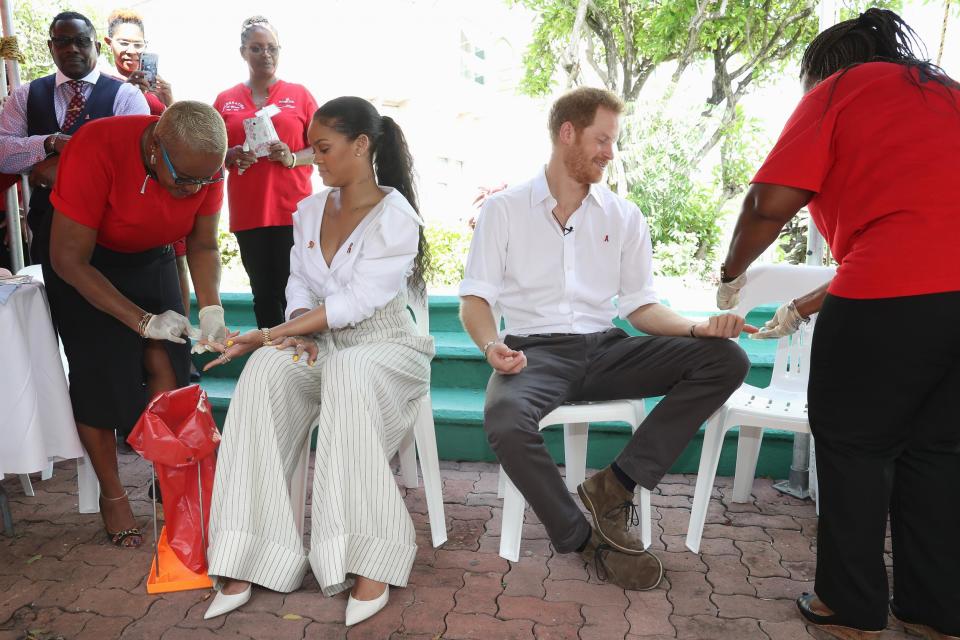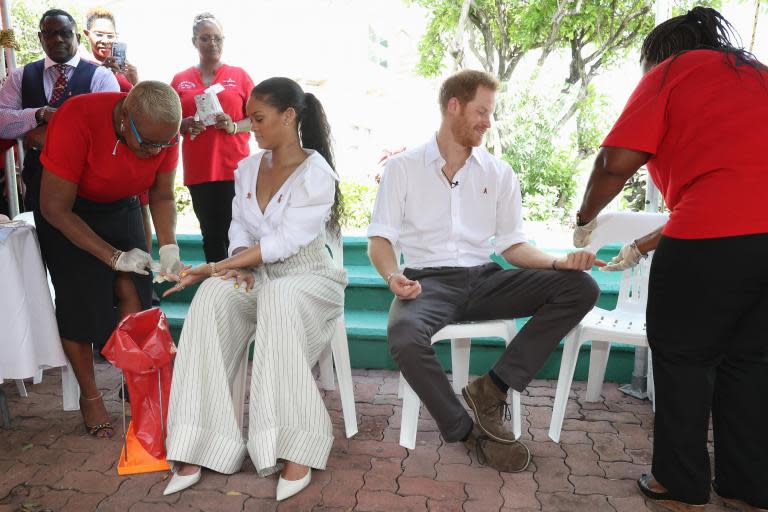National HIV Testing Week: How is Prince Harry involved and how can you get tested?
Saturday November 17 marks the beginning of National HIV Testing Week, a campaign promoted by organisations including HIV Prevention England to encourage people across the nation to have regular tests for the condition.
Prince Harry has given the initiative his full support, discussing the stigma that still surrounds HIV in a video shared by Kensington Palace.
While rates of HIV diagnoses have declined in the UK in recent years, undergoing the simple procedure that tests for the condition is still essential.
#HIVTestWeek starts this Saturday and here's how to get involved and promote testing:
☝️Register your testing events: https://t.co/Nvs1LEL0B0
☝️Download the social media pack: https://t.co/SHs50ujE52
☝️Download and share our videos:https://t.co/G4Wz9EYrW5 pic.twitter.com/gbRkL7B7cy— HIV Prevention England (@HIVPreventionEn) November 13, 2018
So how did National HIV Testing Week start, what does an HIV test involve and how can you get tested?
Here’s everything you need to know:
When did National HIV Testing Week start?
The first National HIV Testing Week took place in 2012.
While the goal of the campaign is to raise awareness of and encourage HIV testing, the main aim of the week is to target those who are most at risk of contracting the virus, as Terrence Higgins Trust policy director Lisa Power explained.
“It’s aimed at gay men and African people, because those are the two groups of people with the highest rates of HIV here,” she wrote in a blog for HuffPost to mark the campaign’s launch.
“One gay man in 10 in London, and one in 20 in the country, has HIV. For people in Africa and living here, it’s about the same.
“That’s as high, or higher, than many of the countries which we think of as centres of the epidemic.”
Since the start of National HIV Testing Week six years ago, rates of HIV diagnoses in the country have been steadily declining.
From 2015 to 2016, the number of people being diagnosed with HIV dropped by 18 per cent, Terrence Higgins Trust reports.
As Prince Harry explains, the increased number of people who’ve been tested for HIV over the past few years has had a significant impact on this decline.
“New HIV diagnoses are declining in the UK. Over the past two years alone, they have dropped by an incredible 28 per cent nationally and us getting tested has helped play a major role in this shift,” he says.
What does an HIV test involve?
Individuals with HIV may not show symptoms for several years, which is why being tested is a wise course of action.
There are four main types of HIV test, as outlined by the NHS: a blood test, a point of care test, a home sampling kit and a home testing kit.
When a person undergoes an HIV blood test, they’ll have a sample of blood taken in a clinic, which will then be sent to a laboratory.
The results from a blood test will typically be available on the same day, or in a few days.
A point of care test involves a medical professional taking a sample of your saliva or a spot of blood from your finger, which is then tested in the clinic with results available within a matter of minutes.
When using a home sampling kit, you’ll collect a sample of saliva or a spot of blood from your finger at home, which you’ll then send off for testing.
With a home testing kit, you’ll carry out the same process by collecting a sample of saliva or a spot of blood from your finger, which you can then test at home yourself.
Where can you go for an HIV test?
Sexual health clinics or community testing sites will be able to provide you with an HIV test.
In order to find a clinic near you where you can take the test, visit aidsmap.com/hiv-test-finder and enter your location.
You can also ask your GP for an HIV test, Public Health England explains.
In some areas of the UK, people are eligible for free home HIV tests.
You can see whether a free home HIV test is available for you by entering your postcode at test.hiv.
If you’re not eligible for a free test, you can buy one online or from pharmacies such as Superdrug Online Doctor, which is selling a home HIV test for £30.



